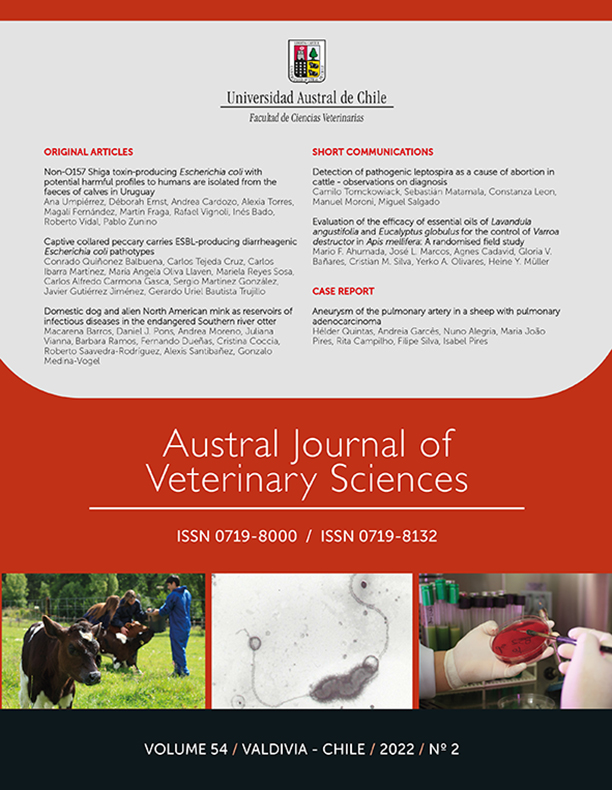Domestic dog and alien North American mink as reservoirs of infectious diseases in the endangered Southern river otter
Main Article Content
Abstract
Introduced alien carnivores are host to infectious diseases that may become an important threat for native carnivore species conservation. Canine distemper virus (CDV) is thought to be transmitted among individuals by direct contact and to present viral dynamics associated with a density-dependent multi-host carnivore community. In contrast, Canine Parvovirus (CPV) is mostly transmitted by indirect contact and does not depend only on the density, but also on the social behaviour of infected as well as susceptible hosts. The objective of this study was to assess how introduced American mink (Neovison vison) can act as a bridge-host between domestic dog (Canis familiaris) and Southern river otter (Lontra provocax) in different dog and mink population density scenarios. Our data show that otters are seropositive to both CDV and PV, as well as a molecular identity to Parvovirus in dogs and minks. Furthermore, a strong positive correlation between dog population density and observed seroprevalence of CDV in dogs, minks, and otters was recorded. For Parvovirus, the observed seroprevalence in mink and otters was not correlated to a higher dog population density, but instead a relationship between dog and mink population densities and social behaviour. Our results suggest that introduced American mink and domestic dogs are reservoirs of CDV and PV, both being diseases of major importance for the conservation of native endangered carnivores in Patagonia.

